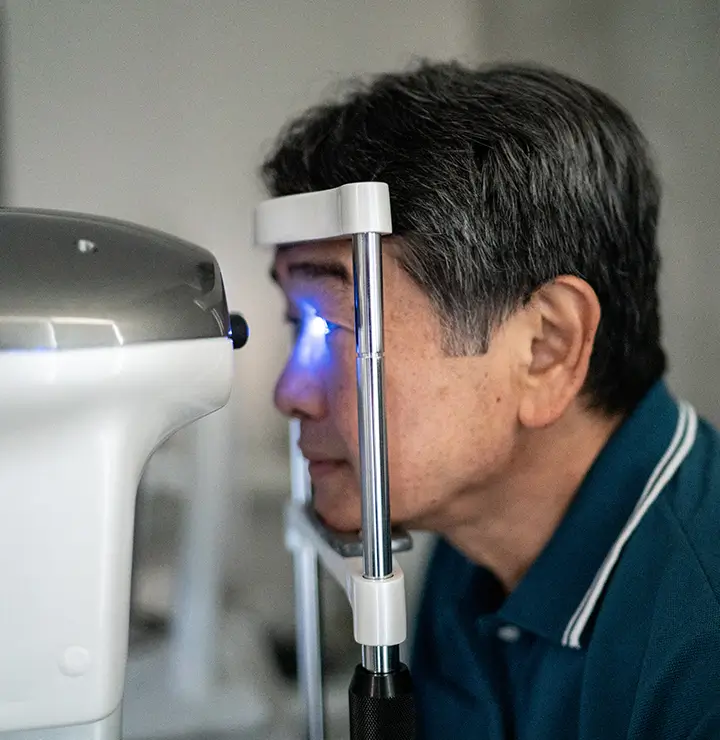Dry Eyes
Dry eye is a very common condition in which the eye does not produce enough tears, or when tears do not function properly and evaporate too quickly.
Untreated, dry eye can cause pain, inflammation, ulcers, scars on the cornea and blurry vision. Dry eye can make it more difficult to perform some activities, such as watching TV, using the computer and reading.
Other names for dry eye include dry eye syndrome (DES), keratoconjunctivitis sicca (KCS), dysfunctional tear syndrome, lacrimal keratoconjunctivitis, evaporative tear deficiency, aqueous tear deficiency, and LASIK-induced neurotrophic epitheliopathy (LNE).
Symptoms
Dry eye symptoms may include any of the following:
- Eye stinging or burning
- A foreign body sensation
- Episodes of excess tears following very dry eye periods
- A stringy discharge from the eye
- Eye pain and redness
- Episodes of blurred vision
- Heavy eyelids
- Contact lens intolerance
- Decreased tolerance of reading, working on the computer or any activity that requires sustained visual attention
- Eye fatigue
Causes
Dry eye can have several causes:
- Underlying medical conditions, such as Sjogren's syndrome, or lacrimal and meibomian gland dysfunction
- Medications
- Contact lens use
Treatment
Depending on the cause of dry eye, our physicians may use various approaches to relieve the symptoms.
- Lubrication. This is the mainstay of dry eye treatment. Your doctor may have you use artificial tears, preservative-free artificial tears, and/or ointments.
- Lacrimal plugs. Another option is to plug the drainage holes, small circular openings at the inner corners of the eyelids where tears drain from the eye into the nose. Lacrimal plugs, also called punctal plugs, can be inserted painlessly by your doctor. These plugs are made of silicone, are reversible, painless, and temporary.
- Cyclosporine. This drug is an anti-inflammatory and it is the only prescription drug available to treat dry eye. It decreases corneal damage, increases basic tear production and reduces symptoms of dry eye. It may take three to six months of twice-a-day dosages for the medication to work.
- Corticosteroids. If the dry eye is especially severe, short-term use of corticosteroid eye drops decrease inflammation.
- Autologous serum drops. In severe cases, the use of autologous serum drops may be advised. In this situation, your own blood is drawn and spun down to eliminate the blood cells. The serum is then processed and bottled for use as drops on the ocular surface.
- Supplements. In some patients with dry eye, supplements or dietary sources (such as tuna fish) of omega-3 fatty acids (especially DHA and EPA) may decrease symptoms of irritation. The use and dosage of nutritional supplements and vitamins should be discussed with your primary medical doctor.
If dry eye results from taking a systemic medication, your doctor may recommend switching to a medication that does not cause the dry eye side effect.
If contact lens wear is the problem, your doctor may recommend another type of lens or reducing the number of hours you wear your lenses. In the case of severe dry eye, your doctor may advise you not to wear contact lenses at all.







